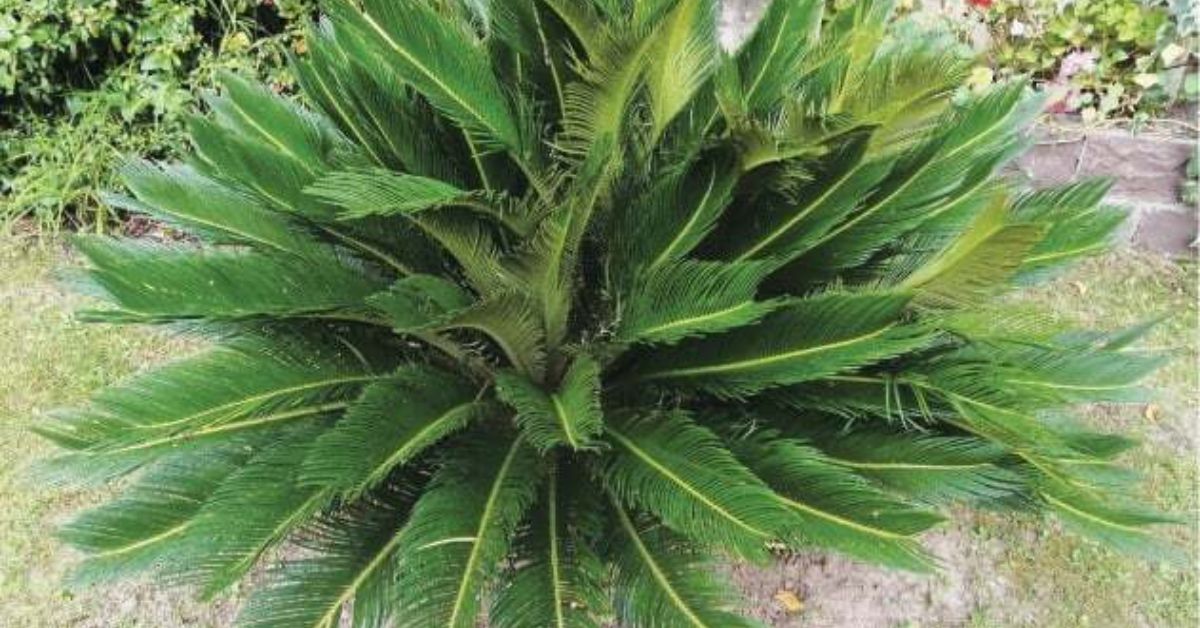The Comb Palm, also called the Sago Palm, Kangi Palm, or Caryota mitis, is a unique and lovely member of the palm family. This plant is well-known for having a distinctive look, with leaflets that resemble comb teeth. Native to tropical Southeast Asia, comb palms are frequently utilised as decorative plants in indoor and outdoor gardens. It’s a popular choice for adding a touch of tropical beauty to any location because of its beautiful foliage and manageable stature.
Characteristics of the Comb Palm
The unique fronds of the Comb Palm make it easy to identify. The name comes from the fact that this palm’s leaves are segmented into multiple parts that resemble comb teeth. The plant can be grown both indoors and outdoors, reaching a maximum height of roughly 10 to 15 feet. Its vivid green foliage give it a lush, exotic appearance, and its slender trunk is covered in leaf scars.
Growing Conditions for Comb Palm
Though they can survive indoors, comb palms prefer warm, tropical climes. Although they may handle lower light levels, they prefer bright, indirect light. To avoid root rot, the plant needs soil that drains properly. It also needs regular irrigation to maintain a constant moisture level in the soil. Overwatering, however, is to be avoided as it may result in fungus issues. The Comb Palm can be cultivated inside in cooler climes, though it will require enough humidity and sporadic misting to replicate its natural environment.
Benefits of Growing Comb Palm
The benefits of growing a comb palm are numerous. It’s a terrific decorative plant for homes and offices because of its unusual design, which lends an exotic elegance to any room. Comb palms can also flourish with little care and require very little upkeep. By removing pollutants and releasing oxygen, they also aid in enhancing indoor air quality and creating a healthier living space.
Common Problems and Solutions
Comb palms have some problems, just like many other plants do. One typical issue is leaf browning, which can be brought on by low humidity or erratic watering. Make sure the plant gets frequent watering in order to solve this, and if necessary, raise the humidity levels. Infestations of pests like scale insects and spider mites are another problem. Examine the plant frequently, and use natural remedies or the proper insecticides to cure any insects that you find. Another way to help avoid fungal illnesses is to make sure the plant has enough air circulation around it.
Comb Palm Care Tips
Maintaining a Comb Palm requires a few essential procedures. Check the moisture content of the soil on a regular basis and water the plant as needed, letting the top layer of soil dry out a little bit in between. For a healthy growth, give the plant bright, indirect light. During the growing season, fertilise the Comb Palm once a month using a balanced, water-soluble fertiliser. To maintain the greatest possible appearance for the plant and to promote new growth, remove any damaged or dead leaves.
Using Comb Palm in Landscaping
Comb palms are adaptable and useful in a variety of landscape contexts. They make great focal points in tropical and subtropical landscapes, or they can be planted in clusters for a lush, tropical appearance. They are ideal for bringing a little greenery indoors to corridors, offices, and living areas. They are an excellent option for indoor plant arrangements due to their small size, which makes them fit nicely in pots and containers.
Conclusion
A distinctive and lovely plant that gives any area a hint of exotic charm is the comb palm. Its unique leaf form and compact dimensions make it a flexible option for both indoor and outdoor environments. With the correct growth environment and maintenance, you may appreciate this tropical plant’s beauty and use its colourful, rich foliage to enhance your house or yard. The Comb Palm is a chic and useful addition to any plant collection, whether it is utilised as a centrepiece in landscaping or as an attractive houseplant.
FAQs
What is a Comb Palm?
A Comb Palm, or sago palm, is a palm plant known for its distinctive fronds that resemble a comb. It is used for ornamental purposes and can be grown both indoors and outdoors.
How tall does a Comb Palm grow?
Comb Palms typically grow to a height of about 10 to 15 feet. They have a slender trunk and can be cultivated in pots or directly in the ground.
What are the ideal growing conditions for Comb Palm?
Comb Palms prefer bright, indirect light and well-draining soil. They need regular watering but should not be overwatered. They can adapt to indoor environments with adequate humidity.
How do I care for a Comb Palm?
To care for a Comb Palm, ensure consistent soil moisture, provide bright, indirect light, and fertilize monthly during the growing season. Prune dead leaves as needed and increase humidity if the air is dry.
What common problems should I watch for with Comb Palm?
Common issues include leaf browning due to inconsistent watering or low humidity and pest infestations like spider mites. Address these problems by adjusting care practices and treating pests promptly.
Can Comb Palm be grown indoors?
Yes, Comb Palm can be grown indoors. It thrives in bright, indirect light and needs regular watering and humidity to mimic its natural tropical environment.











